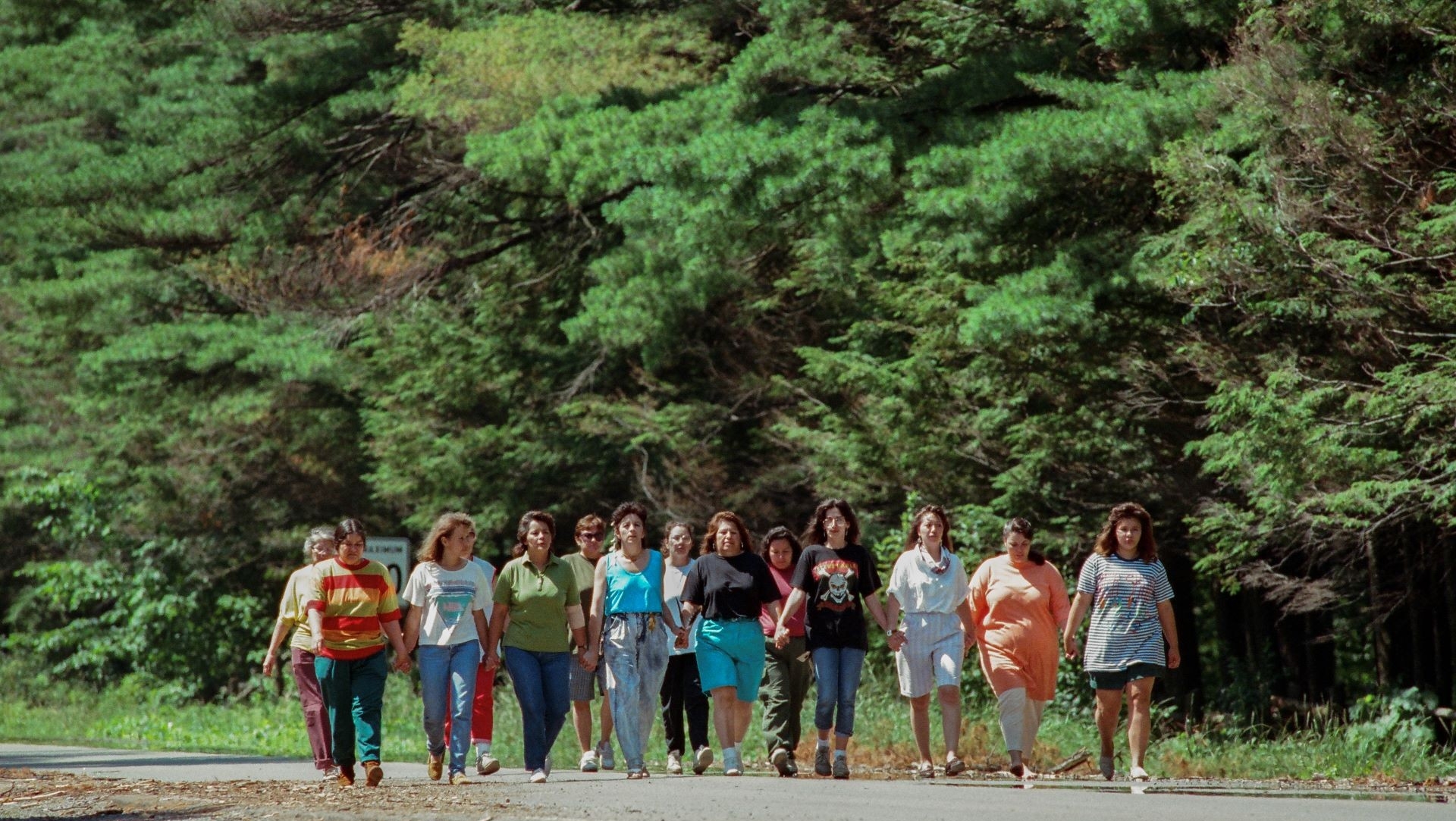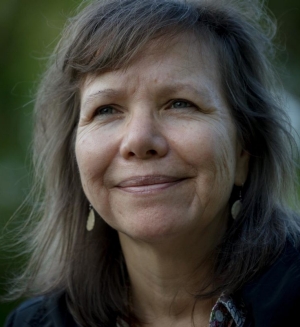A lifetime of activism
An advocate for Indigenous rights and sovereignty, Gabriel wears many hats. Among those is serving as the former president of Quebec Native Women and as a board member of the National Executive Steering Committee for Indigenous Climate Action. She additionally works in language revitalization with Kontinonhstats – the Mohawk Language Custodians Association, and formerly at the Language and Cultural Center in Kanehsatà:ke.
Gabriel is perhaps best known for her role as spokesperson for her community during the Kanehsatà:ke Resistance of 1990.
“Oka had been stealing our land for centuries,” she says. “Oka was not under crisis — Kanehsatà:ke was. We were being denied food, our land was being taken.”
Defending themselves from proposed further encroachment (including into an ancestral burial ground) Kanien’kehá:ka were portrayed negatively in local media — as a nuisance, a threat.
“And we’re still no further ahead than in 1990. We’re still losing land; reconciliation is on our shoulders,” says Gabriel. “We’re the government’s problem. That’s how we’re seen.”
Images matter
A graduate of Concordia’s Studio Arts program, Gabriel has enjoyed a celebrated career in painting and drawing. In 2021, she completed a documentary program at the New York Film Academy and has been freelancing since.
“As an artist you always want to try new mediums,” says Gabriel, “and I think images speak to a lot to people.”
Images can influence the way events are understood and remembered. And the absence of images can speak volumes as well.
Gabriel notes that when it comes to portraying the 1990 conflict, the image of the ‘warrior’ is of Kanien’kehá:ka men. “Women are part of the resistance, and this is under-represented,” she says. “Women played a really major role — before and after.”
She adds that popular depictions do not acknowledge all of the work by Indigenous women in the 500-plus years since contact: “All that we have been doing with regards to survival through language and changing the Indian Act.”
‘Defending our land and our people’
In Kanaténhs – When The Pine Needles Fall, Gabriel wanted the story to be told by the people who experienced and lived it. “I’ve been thinking about this film for three decades,” she says.
Gabriel wanted to produce her own material based on memory, oral history and personal narrative — just a few of the many untold stories connected to the event.
“Creating this film was part of reclaiming the narrative that has been explained, and acquired, by so many others,” she says.
The film is an acknowledgement of those involved in the 1990 crisis and of their struggles. Gabriel is proud of the film, describing it as a “nice legacy for young Indigenous women, focusing on governance, and defending our land and our people.”
She adds that there is much to unpack, and her film is just the beginning.
“Nobody really understands what happened at that time from our perspective,” she says. “It’s really important that our perspective be heard — no, it’s our obligation actually. It’s part of that decolonization process.”


 Mohawk women marching in solidarity during the Kanehsatà:ke Resistance near Oka, Quebec in 1990. | Photo credit: John Kenney
Mohawk women marching in solidarity during the Kanehsatà:ke Resistance near Oka, Quebec in 1990. | Photo credit: John Kenney
 Katsi’tsakwas Ellen Gabriel: “Creating this film was part of reclaiming the narrative that has been explained, and acquired, by so many others.” | Photo credit: Allan Lissner
Katsi’tsakwas Ellen Gabriel: “Creating this film was part of reclaiming the narrative that has been explained, and acquired, by so many others.” | Photo credit: Allan Lissner